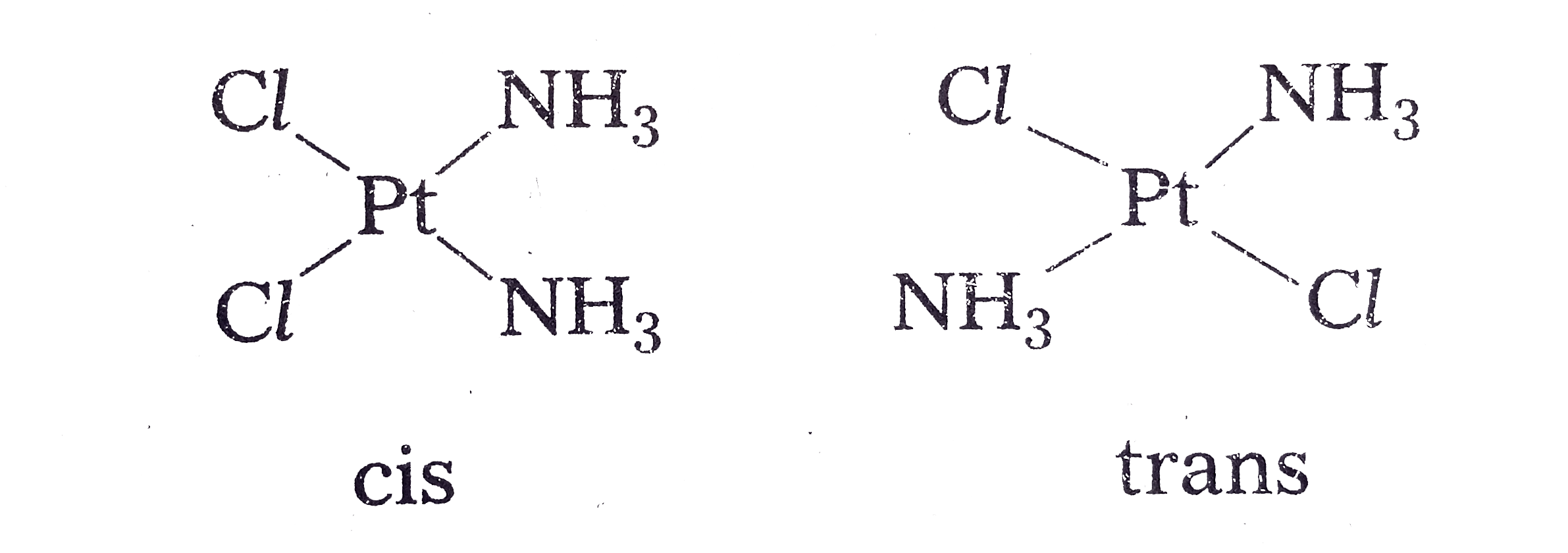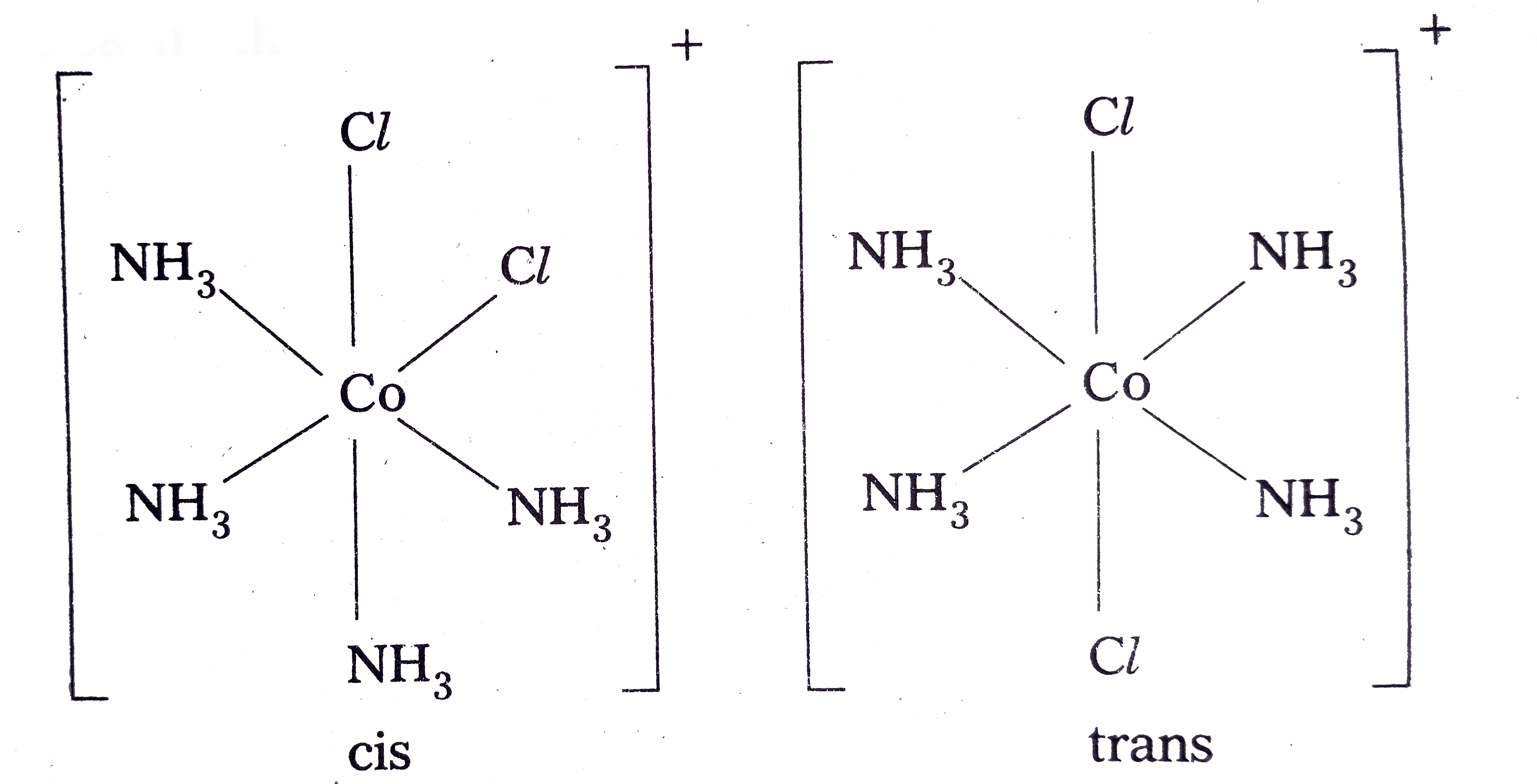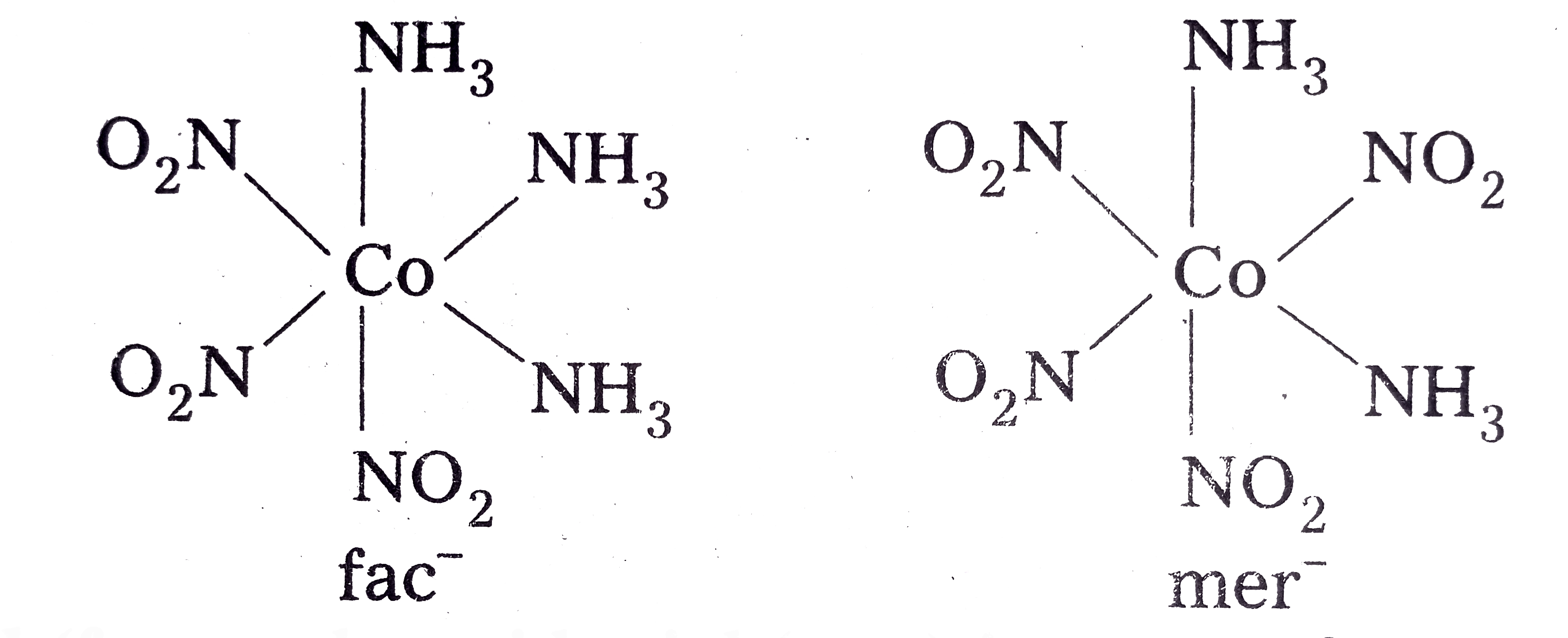Explain different types of isomerism exhibited by Co-ordination compounds, giving suitable examples.Solution in Telugu
Isomerism in Co-ordination compounds : Isomers are compounds that have the same chemical formula but different arrangement of atoms. Two principal types of isomerism are known among Co-ordination compounds namely stereo isomerism and structural isomerism.
a) Stereoisomerigm : Stereoisomerism is a form of isomerism in which two substances have the same composition and structure but differ in the relative spatial positions of the ligands. This can be sub divided into two classes namely.
i) Geometrical isomerism and ii) optical isomerism
b) Structural isomerism:
i) Linkage isomerism ii) Co-ordination isomerism iii) Ionisation isomerism iv) Hydrate isomerism
a) (i) Geometrical isomerism :
→ Geometrical isomerism aries in Co-ordination complexes due to different possible geometric arrangements of the ligands.
→ This isomerism found in complexes with Co-ordination numbers 4 and 6
→ In a square planar complex of formula [Mx2L2] the two ligands may be arranged in adjacent to each other in a cis isomer (or) opposite to each other in a trans isomer

→ Square planar complex of type [MAB XL] shows three isomers two-cis and one trans. (A, B, X, L are unidentate ligands is square planar complex).
→ Geometrical isomerism is not possible in tetrahedral geometry.
→ In octahedral complexs of formula [MX2L4] in which two ligands X may be oriented cis or trans to each other.

→ Another type of geometrical isomerism occurs in octahedral Co-ordination compounds of type [Ma3b3] if three donar atoms of the same ligands occupy adjacent positions at the comers of an octahedral face then it is facial (fac) isomer. When the positions occupied are around the meridian of the octahedran then it is meridonial (mer) isomer.

a(ii) Optical isomerism : Optical isomerism arises when two isomers of a compound exist such that one isomer is a mirror image of the other isomer. Such isomers are called optical isomers or enantiomers. The molecules or ions that cannot be superimposed are called chiral. The two forms are called dextro (d) and laevo (l) depending upon the direction they rotate the plane of polarise·d light in a polarimeter (d rotates to the right, l to the left). Optical isomerism is common in octahedral complexes involving bidentate ligands.
b (i) Linkage isomerism : Linkage isomerism arises in Co-ordination compound containing: ambidentate ligand. A simple example is provided by complexes containing the thiocyanate ligand-NCS−, which may bind through the nitrogen to give M-NCS or through sulphur to give M-SCN.
eg.: [Mn(CO)5SCN]and[Mn(CO)5NCS]
(ii) Co-ordinate isomerism : This type isomerism arises from the interchange of ligands between cationic and anionic entities of different metal ions present in a complex.
eg. : [Co(NH3)6][Cr(CN)6]and[Co(CN)6][Cr(NH3)6]
(iii) Ionisation isomerism : This form of isomerism arises when the counter ion in a complex salt is itself a potential ligand and can displace a ligand which can then become the counter ion
eg.: [Co(NH3)5SO4]Brand[Co(NH3)5Br]SO4
(iv) Hydrate isomerism : This form of isomerism is known as hydrate isomerism since water is involved as a sdlvent. Hydrate isomers differ by whether or not a hydrate molecule is directly bonded to the metal ion or merely present as free solvent molecules in the crystal lattice.
Topper's Solved these Questions
- D AND F- BLOCK ELEMENTS AND CO-ORDINATION COMPOUNDS Book:VIKRAM PUBLICATION ( ANDHRA PUBLICATION)Chapter:D AND F- BLOCK ELEMENTS AND CO-ORDINATION COMPOUNDS Exercise:INTEXT QUESTIONS
Explore 33 Videos
- D AND F- BLOCK ELEMENTS AND CO-ORDINATION COMPOUNDS Book:VIKRAM PUBLICATION ( ANDHRA PUBLICATION)Chapter:D AND F- BLOCK ELEMENTS AND CO-ORDINATION COMPOUNDS Exercise:SHORT ANSWER QUESTIONS
Explore 57 Videos
- CHEMISTRY IN EVERYDAY LIFEBook:VIKRAM PUBLICATION ( ANDHRA PUBLICATION)Chapter:CHEMISTRY IN EVERYDAY LIFEExercise:Intex questions
Explore 5 Videos
- ELECTROCHEMISTRY & CHEMICAL KINETICSBook:VIKRAM PUBLICATION ( ANDHRA PUBLICATION)Chapter:ELECTROCHEMISTRY & CHEMICAL KINETICSExercise:DAM SURE
Explore 18 Videos
Similar Questions
Silver atom has completely filled d-orbitals (4d10) in its ground state. How can you say that it is a transition element ?
View SolutionCompared to 3d series the corresponding transition metals of 4d and 5d transition series show high enthalpy of atomization. Explain.
View SolutionSleeping pills are recommended by doctors to the patients suffering from sleeplessness but is not advisable to take its doses without consultation with the doctor.Why?
Consider the effect of tranquilizers or antidepressants on the nervous system.
View SolutionDiffine conductivity of a material. Give its SI units.
View SolutionExplain linkage , isomerism in co-ordinate compounds .
View SolutionExplain the following types of isomerism in co-ordination compounds. (i) Ionisation isomerism (ii) Hydrate isomerism.
View SolutionThe complex that exhibits Co-ordination isomerism is
View Solutionसंकर यौगिकों में पायी जाने वाली विभिन्न प्रकार की समावयवता को बताइए तथा प्रत्येक का एक-एक उदाहरण दीजिए।
View SolutionExplain geometrical isomerism in Co-ordination compounds giving suitable examples.
View SolutionExplain IUPAC nomenclature of Co-ordination compounds with suitable examples.
View SolutionWhich one of the following compounds would exhibit co-ordination isomerism ?
View Solutionउप-सहयोजी यौगिकों द्वारा प्रदर्शित समावयता को उदाहरण सहित समझिए।
View SolutionCo-ordination isomerism is exhibited by
View SolutionWhich of the following co-ordination compounds would exhibit optical isomerism?
View Solutionज्यामिति समावयवता प्रदर्शित करने वाले चार यौगिकों के उदाहरण दीजिए ?
View Solution

